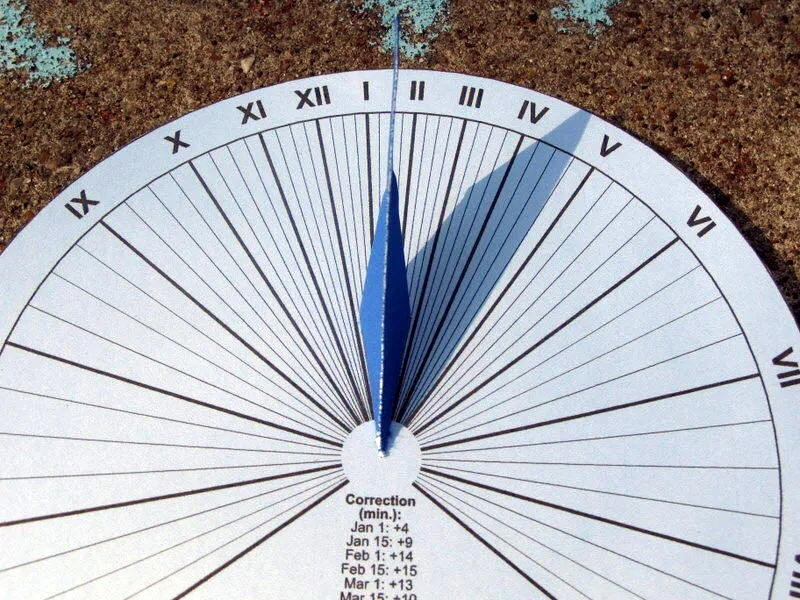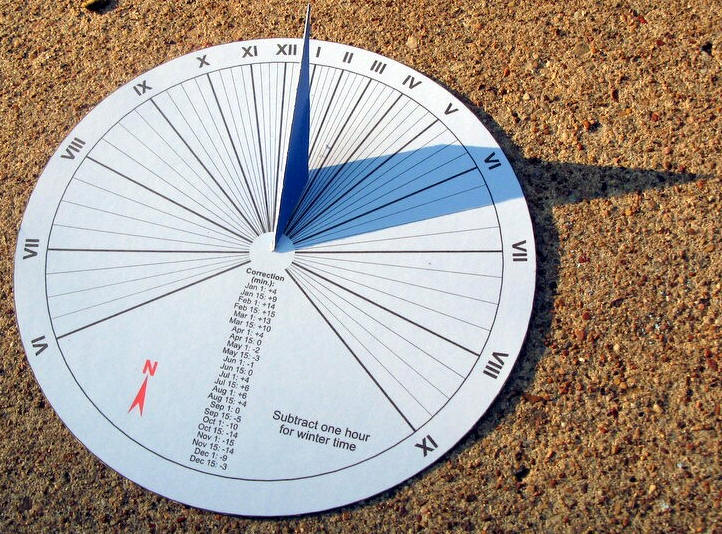
Electronic Sundial / Cadran Solaire électronique (15 minutes)
Des circuits pour s'amuser / Fun circuits

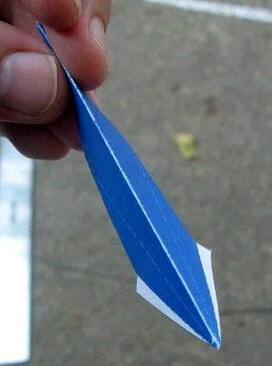
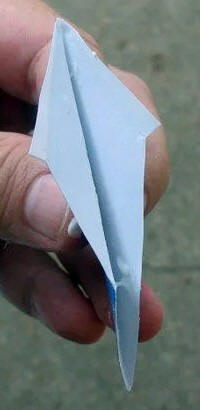
External Sundial

Internal Sundial

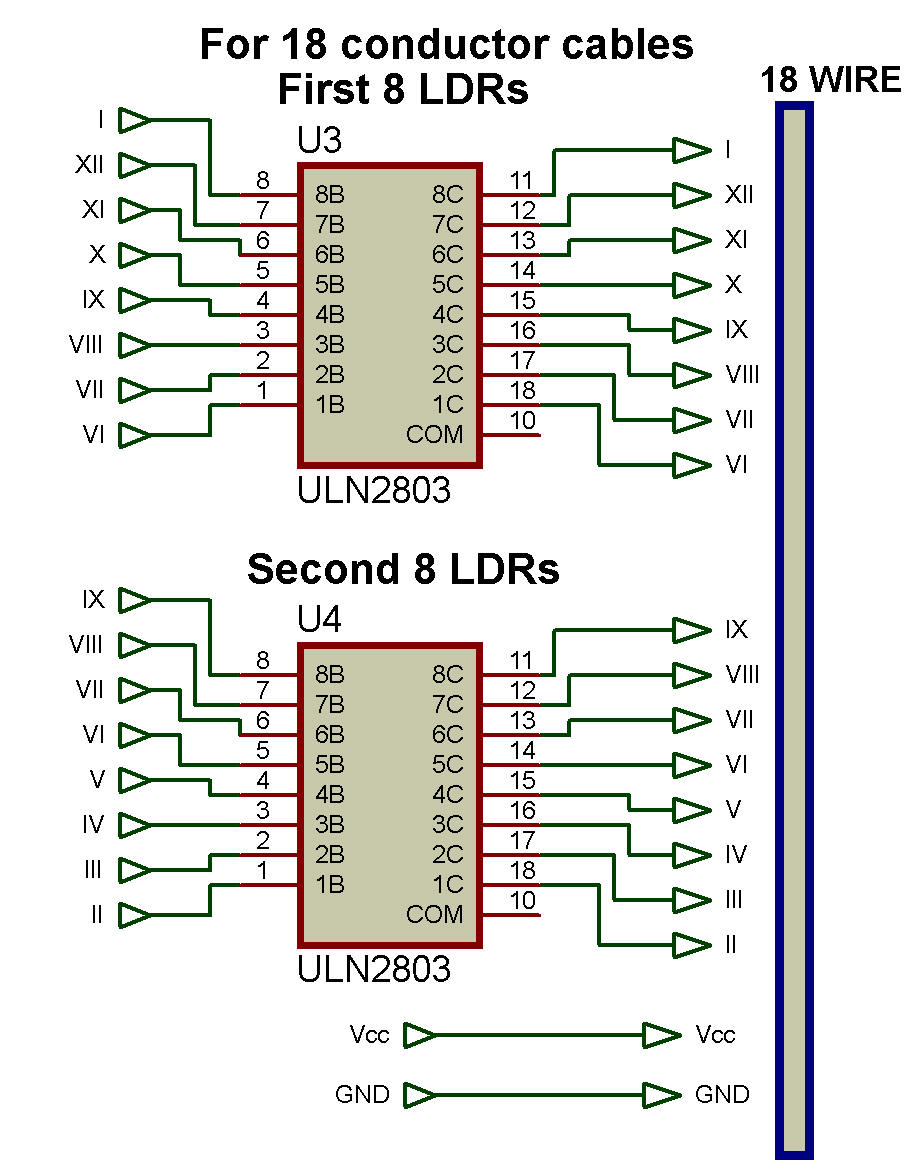
You connect the batteries of each sun dial in
parallel.
For Hour precision
Sundial need 16 LDRs circuit
For 30 minutes precision
Sundial need 31 LDRs circuit
For 15
minutes precision
Sundial need 61 LDRs circuit
You can replace the
50K potentiometer with a fixed resistor of the appropriate value.
Place LDR and LED at the top of the lines you want.
(Black dot)
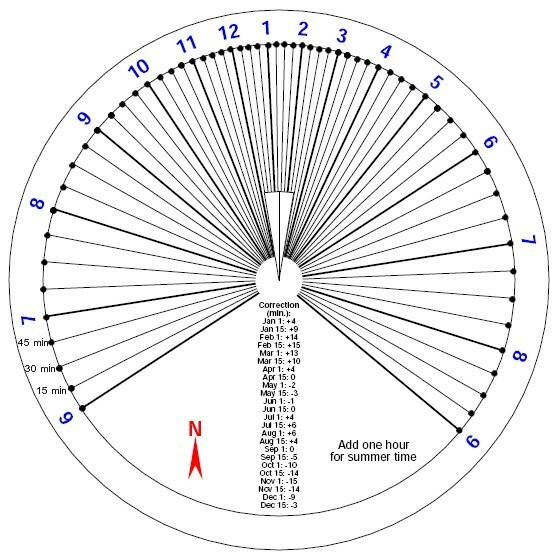
Aligning the Dial
To use the dial, you
need to place it on a level spot (e.g., a sunlit table) and align the "N" arrow
with geographic or true north (in the northern hemisphere, the gnomon will also
point north; in the southern hemisphere, it will point south). Unfortunately,
geographic or true north is not the same as the magnetic north shown by a
magnetic compass.
The simplest way to align is simply to look at a watch
and turn the dial until the shadow shows the correct time. (Also, make sure you
make a daylight savings adjustment if the dial is not printed for the current
season's time.) There are other methods. You can use a magnetic compass and
correct for magnetic declination.
Reading the Sundial
You
read the sundial by looking where the edge of the shadow is, or more precisely
where the edge of the shadow further from the gnomon. Except near solar noon
(which may be more like 1 pm in the summer if you have daylight savings), that
shadow line should be a straight line from the center of the dial out. Near
solar noon, because of the wider base of the gnomon, there will be a bend in the
shadow line--use the outermost portion of the shadow line.
